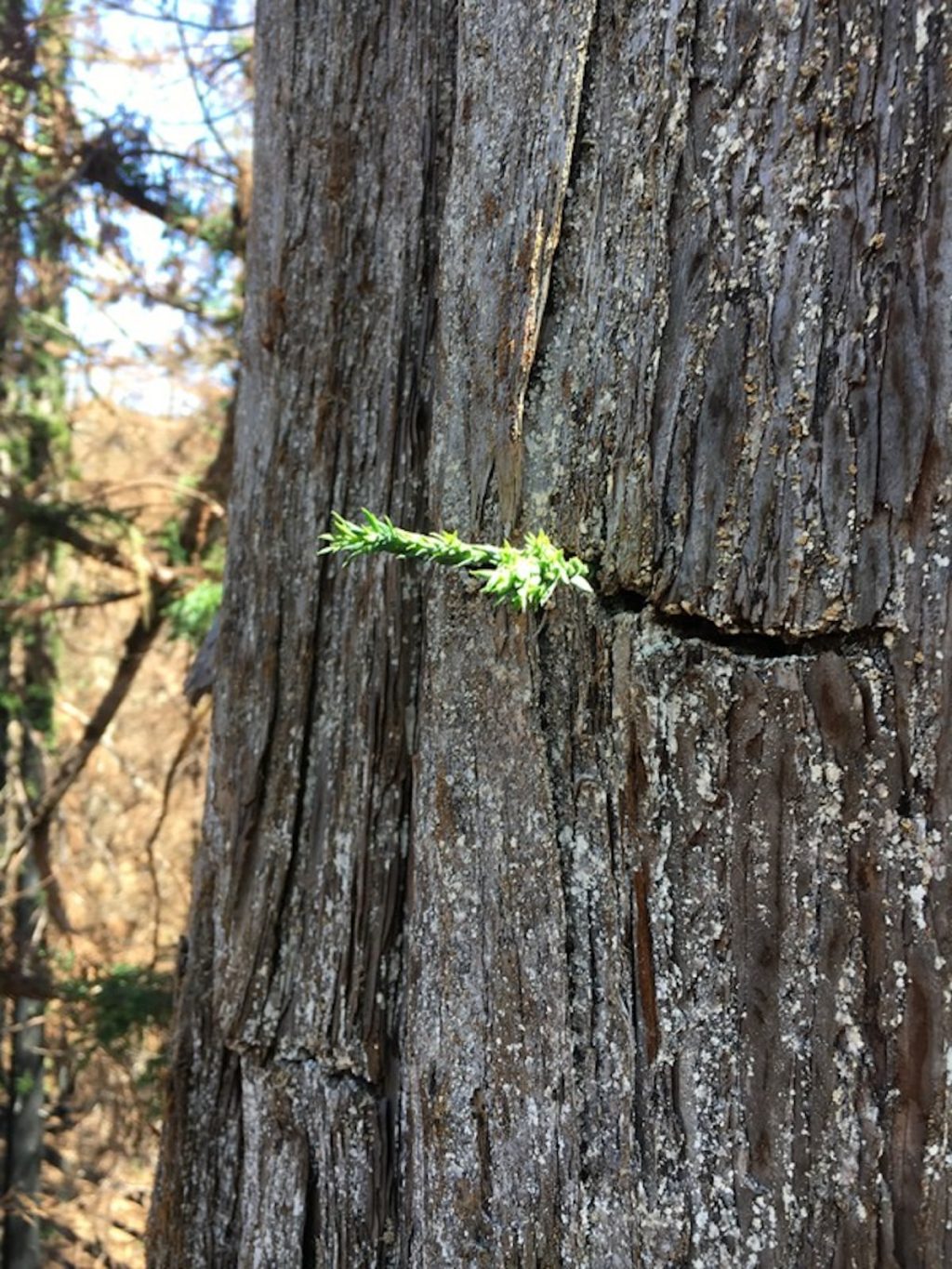Coastal Redwoods Have Remarkable Ability to Recover From Severe Wildfires, Study Finds
4 min read
A previously dormant bud sprouts from a coastal redwood that was burned and thought to be dead in the CZU Lightning Complex Fire. Erik Sather / Northern Arizona University
Founded in 2005 as an Ohio-based environmental newspaper, EcoWatch is a digital platform dedicated to publishing quality, science-based content on environmental issues, causes, and solutions.
New research has found that California’s coastal redwoods have the remarkable capacity to recover from severe wildfires.
The study led by researchers from Northern Arizona University (NAU) looked at the ancient trees’ recovery from the CZU Lightning Complex Fire, which burned thousands of acres in California’s Big Basin State Park in the summer of 2020, a press release from NAU said. Some of the redwoods affected by the fire were over 1,500 years old.
“Recent fire in California damaged coast redwood (Sequoia sempervirens) groves, consuming all foliage on some of the tallest and oldest trees on Earth. Burned trees recovered through resprouting from roots, trunk and branches, necessarily supported by nonstructural carbon reserves,” the authors of the study wrote. “Nonstructural carbon reserves can be many years old, but direct use of old carbon has rarely been documented and never in such large, old trees. We found some sprouts contained the oldest carbon ever observed to be remobilized for growth.”
The research team found that many of the burned trees had not actually succumbed to the fire, as it seemed at first, the press release said. Because of their enormous ability to store carbon, the reserves provided the energy the redwoods needed to resprout. As the forest began to regenerate after the fire, new leaves sprang from buds that had been buried for hundreds of years.
“It remains to be determined if redwood’s old reserves and ancient cell lines are an exception in the plant kingdom or an exceptional example of an insurance strategy common to long-lived plants,” said George Koch, one of the study’s co-authors and a professor at NAU’s Center for Ecosystem Science and Society (Ecoss), in the press release.
The study, “Old reserves and ancient buds fuel regrowth of coast redwood after catastrophic fire,” was published in the journal Nature Plants.
Plants store carbon for various lengths of time, but most models look at periods of no more than a year. This study used models to examine how long reserves could be stored for future use. They did so by inhibiting the natural process of photosynthesis in order to stop new carbon from being stored while using radiocarbon dating to estimate how old the carbon being used for energy was.
“This study was really exciting for us because we used measurements at the atomic level — counting the amount of carbon-14 relative to carbon-12 —to understand what these sprouts, which start as tiny green shoots, are telling us about the growth strategy of these enormous trees, among the largest living organisms on earth,” said Regents’ professor Andrew Richardson with Ecoss, who was a co-author of the study, in the press release.
The researchers found that, in a few trees, it was likely that carbon reserves were decades or perhaps even a century old.
“As far as we know, these are some of the oldest carbon reserves ever measured,” said Drew Peltier, lead author of the study and an assistant research professor at NAU’s School of Informatics, Computing, and Cyber Systems, in the press release. “Sugars photosynthesized perhaps 100 years ago were used to grow new leaves in 2021. Although coast redwood is clearly a superlative species, it is likely that other long-lived trees also harbor carbon reserves that are much older than previously recognized.”
Many of the redwoods and other tree species in Big Basin State Park did not survive the catastrophic fire, and though the coastal redwoods were able to resprout, it could take centuries for the Big Basin forest ecosystem to regenerate completely.
“For certain trees, simulations estimate up to half of sprout carbon was acquired in photosynthesis more than 57 years prior, and direct observations in sapwood show trees can access reserves at least as old,” the study’s authors wrote. “For organisms with millennial lifespans, traits enabling survival of infrequent but catastrophic events may represent an important energy sink. Remobilization of decades-old photosynthate after disturbance demonstrates substantial amounts of nonstructural carbon within ancient trees cycles on slow, multidecadal timescales.”
Subscribe to get exclusive updates in our daily newsletter!
By signing up, you agree to the Terms of Use and Privacy Policy & to receive electronic communications from EcoWatch Media Group, which may include marketing promotions, advertisements and sponsored content.





